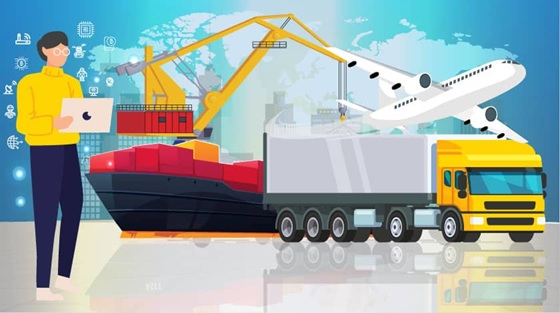In 2025, retail e-commerce sales are projected to exceed $4.3 trillion, according to Statista, a number that would have seemed almost unthinkable a decade ago. This exponential growth isn’t just changing what people buy, but how products move from warehouses to doorsteps, and how customers experience every step of the journey. Technology is at the heart of this transformation, reshaping business logistics and redefining expectations.
The Rise of Real-Time Supply Chain Visibility
Gone are the days when businesses and customers waited in uncertainty for shipments to arrive. Today, advanced tracking systems allow for real-time updates at every stage of the supply chain. GPS-enabled freight, RFID tagging, and cloud-based logistics software provide unprecedented visibility. Businesses can now pinpoint a product’s exact location, anticipate delays, and adjust schedules instantly. This not only improves efficiency but also helps manage customer expectations, reducing frustration and increasing trust.
Automation and AI: From Warehouses to Route Planning
Artificial intelligence and automation are playing a pivotal role in modern logistics. In warehouses, AI-powered robots are streamlining the picking, packing, and sorting of goods, minimizing human error and speeding up fulfillment. On the road, AI-driven route optimization tools analyze factors like traffic, weather, and fuel costs to deliver goods faster and more sustainably. This shift from manual to machine-led processes doesn’t just cut operational costs; it significantly enhances delivery reliability.
Evolving Customer Expectations in the Digital Age
With faster delivery options and seamless communication channels, customers now expect a level of convenience that was once reserved for premium services. They want flexible delivery windows, easy returns, and proactive problem-solving. Digital tools like automated chatbots, instant notifications, and personalized portals are becoming standard features, ensuring customers stay informed without having to ask. This integration of logistics and customer service has blurred the lines between operations and experience.
Sustainable Logistics: A Growing Priority
As climate change concerns mount, businesses are under pressure to make logistics more sustainable. Electric delivery vehicles, carbon-neutral shipping options, and smarter packaging designs are no longer niche concepts; they’re competitive necessities. Many companies are also exploring shared logistics networks to consolidate shipments and reduce environmental impact. Platforms such as www.shiply.com showcase how technology can facilitate eco-friendly and cost-effective transport solutions, connecting customers and businesses with carriers who are already making similar journeys.
The Future: Predictive Logistics and Hyper-Personalization
Looking ahead, the next leap in logistics will be predictive rather than reactive. AI will anticipate demand spikes before they occur, enabling companies to pre-position inventory closer to customers. At the same time, hyper-personalization will shape delivery experiences, from preferred packaging styles to delivery at specific times of day. These advancements will require close collaboration between tech developers, logistics providers, and retailers to create seamless, adaptable supply chains.
Technology is no longer a supportive function in logistics; it’s the driving force behind how goods move and how customers engage with brands. From real-time visibility and automation to sustainability and predictive planning, the digital revolution in logistics is about creating experiences that exceed modern customer expectations.

